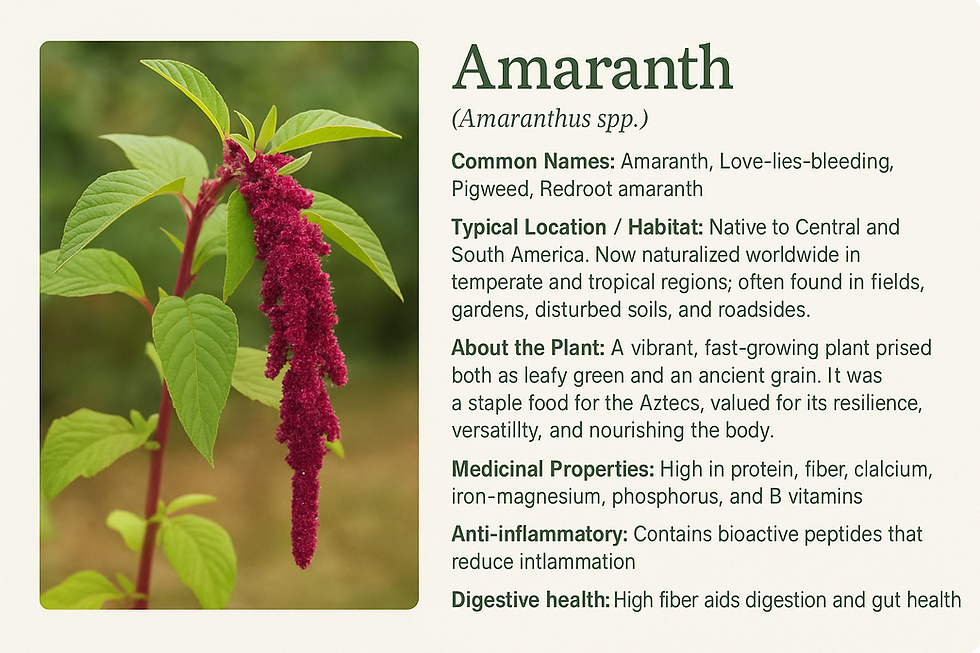Amaranth
- wheresciencemeetsn
- Jun 7
- 1 min read
Updated: Jul 2
🌿 Amaranth
(Amaranthus spp.)
📜 Common Names:
Amaranth, Love-lies-bleeding, Pigweed, Redroot amaranth
🌎 Typical Location / Habitat:
Native to Central and South America. Now naturalized worldwide in temperate and tropical regions; often found in fields, gardens, disturbed soils, and roadsides.
🌱 About the Plant:
Amaranth is a vibrant, fast-growing plant prized both as a leafy green and as an ancient grain. It was a staple food of the Aztecs, valued for its rich nutrition and ceremonial significance. The tiny seeds are high in protein and minerals, while the leaves are packed with vitamins. In modern herbalism and nutrition circles, Amaranth is celebrated for its resilience, versatility, and ability to nourish the body — truly a plant where food and medicine meet.
⚗️ Medicinal Properties:
Nutrient-dense: High in protein, fiber, calcium, iron, magnesium, phosphorus, and B vitamins.
Anti-inflammatory: Contains bioactive peptides that reduce inflammation.
Heart health: Supports healthy cholesterol levels and blood pressure.
Digestive health: High fiber aids digestion and gut health.
Immune support: Rich in antioxidants and minerals.
Bone support: Excellent source of calcium and magnesium.
🍵 Best Ways to Use:
Cooked grain: Used like quinoa or rice; great in porridges, pilafs, or baked goods.
Leaves: Eaten as cooked greens (similar to spinach).
Flour: Ground seed used in gluten-free baking.
Infusion (leaves): Traditional tea for digestive and respiratory support.




Comentarios